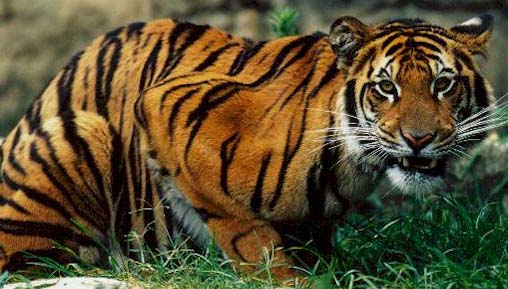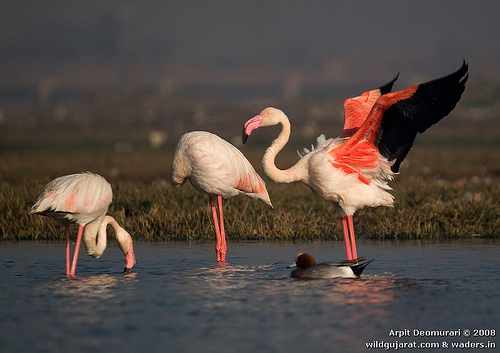In pages of Indian mythology, the mythical bird Garuda has a pivotal role. Considered as the carrier of Lord Vishnu, this bird is said to have such large wingspan that it can shade the sun. But in the real world, the bird that is biologically known as the Greater Adjuntant and popularly called the Garuda is endangered. Now, Four years after these birds of the stork family started nesting and breeding in Bihar’s Bhagalpur district, their number has increased four-fold – from 78 to over 300.
Tree that Helps Treat Cancer Pushed Towards Extinction
A species of Himalayan Yew Tree that is used to produce a drug called Taxol a chemotherapy drug, is being pushed towards extinction due to overharvesting. Medicinal use and use for fuel is fast depleting the given resource of the tree in India, Afghanistan and Nepal warned scientists.
Good News for Gangetic Dolphin
News of an endangered animal population increasing in number is hard to come by nowadays and therefore whenever such a thing does happen; it brings with itself a sigh of relief. The good news this time is about India’s national aquatic animal the Ganga River Dolphin whose population has increased from 175 last year to 223 at the Vikramshila Gangetic Dolphin Sanctuary, India’s only dolphin sanctuary, located in Bihar.
Sustainability Solutions: Practices for a Better Tomorrow
CII ITC Centre of Excellence for Sustainable Development (CESD) is organising the sixth addition of its sustainability conference. The two day event called Sustainability Solutions: Summit & Exhibition in New Delhi on 25th -26th November, 2011 will explore challenges, opportunities, and strategies for bringing sustainability solutions to Indian Businesses.
Interesting Facts about India’s only Apes: Hoolock Gibbons
India’s biodiversity is home to a varied number of plant and animal species. From the Asiatic Lions inhabiting the semi deciduous forests of western India to the royal Bengal Tigers of Sunderbans, the country has a flora and fauna treasure that is as diverse as the nation itself. But while monkeys and langurs are a common enough site in many Indian states, their cousins, the great man-like apes namely gorillas and orangutans are not found in India. The only tribe of apes inhabiting the country is the Hoolock Gibbons, found in the North-east forests. And because it is the only one, the ape is unquestionably a precious jewel of the Indian forest.
Postage Stamp on Tigers marks Children’s Day
The Department of Post marked Children’s day by releasing two postage stamps designed by school children and sending the message of “Save the Tiger” on Nov. 14. The stamps will be for the denomination of Rs. 5 and Rs. 20.
Camera Traps helping Catch Rhino Poachers
(Contains Graphic Images)Using technology for the benefit of wildlife is a relatively new concept in India. But that the beginning has been made, is clearly an encouraging development. In the remote jungles of North East India, Intel company ‘sleuths’ have been deployed to eradicate rhino poaching by placing camera traps and nabbing the offendors
Madhya Pradesh gears up to Save Tigers in their New Home
The forest department of Madhya Pradesh is hailing the findings of a recent survey by Wildlife Institute of India that suggests that there may be seven tigers in the Indore, Dewas and Barwani ranges. Pepped up with the presence of the wild cat in an area where it was not observed before, the forest department is now planning landscape management strategies that will benefit the tiger.
Road through Rann may Ruin Flamingo Population
The beautiful flamingoes feeding and breeding in India’s Western state of Gujarat are the latest wildlife species that may soon lose their homes to urban development. The state government has plans set to construct a concrete road right through the Kutch wildlife Sanctuary, jeopardizing the lives of flamingoes and wild ass population of the area.
Vanishing Butterflies could mean a Vanishing Planet
The most common of Indian butterflies are becoming uncommon these days. Mega species like tigers and elephants get a little attention but insects are regarded more like pests or mere things of beauty that have no bigger roles to play. But experts say it is this loss of interest in saving small sized species like butterflies that is most fearsome because with the disappearance of these fluttered friends, plants too will lose their pollinators and fail to bloom, bear fruit or provide food for the planet.
Road Trip to Save Tigers
How far will you go to save the tigers of India? Few avid conservationists have answered the question literally, by planning to go on a 6,500 km road trip panning India and spreading the word about conservation and protection of the national animal.











